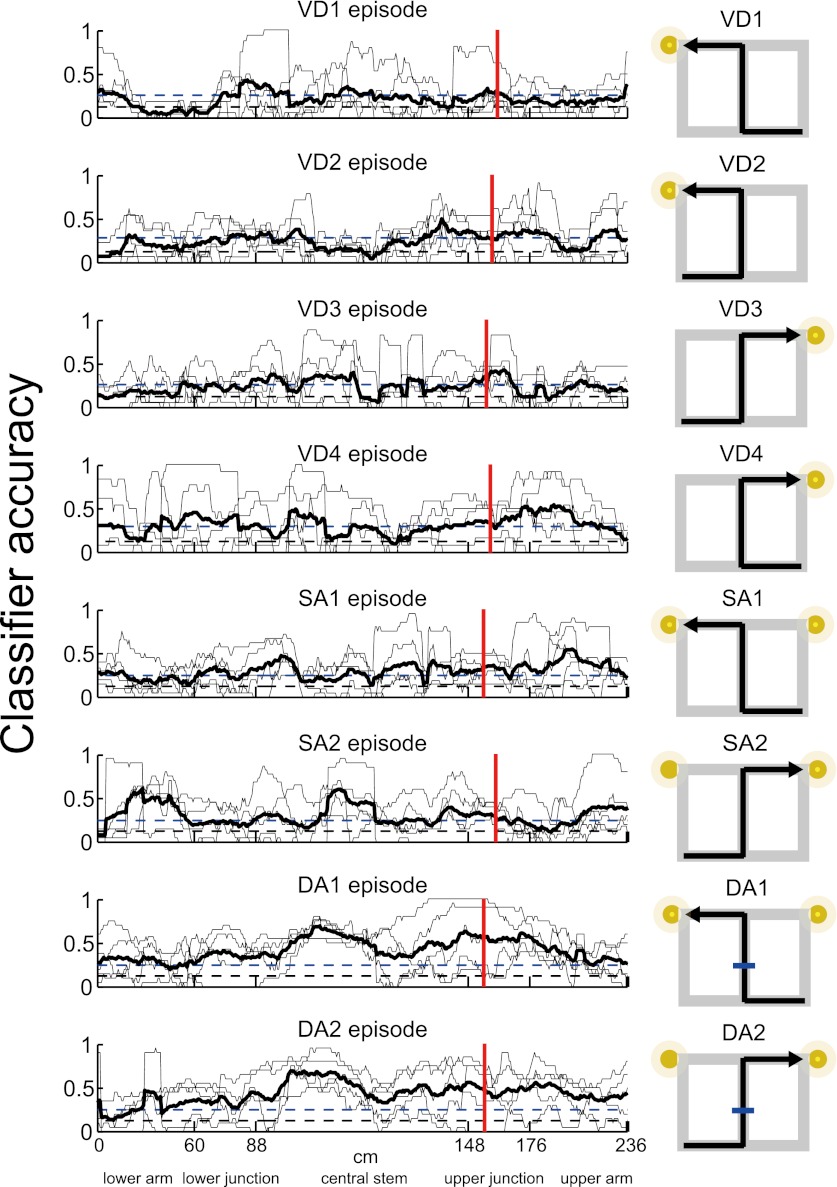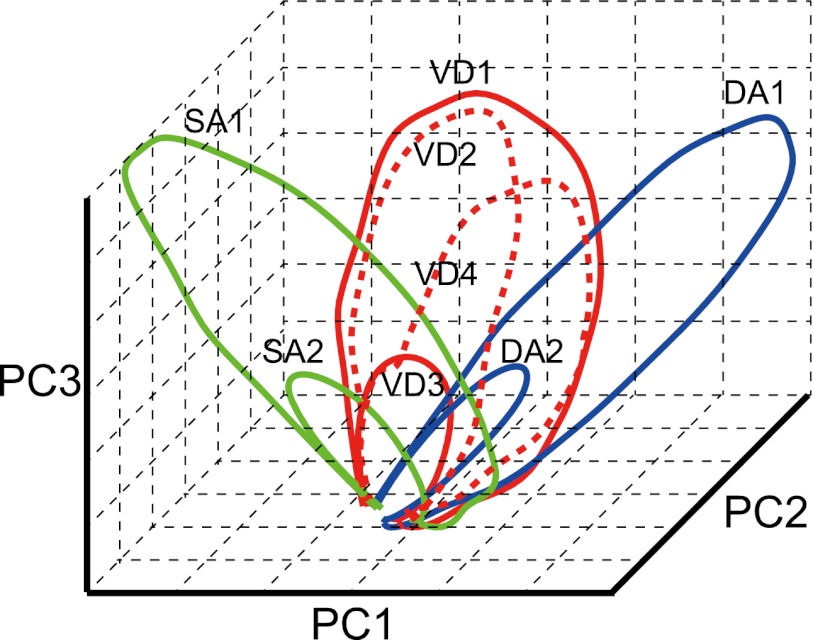Figure 7. Episode-specific neuronal trajectories.
The classification accuracy for determining a trial type from all of the possible trial types (episodes) (thin line, n = 5 rats; thick black line, mean; blue dashed line, p=0.001, binomial test; black dashed line, chance level). The classifier was based on a distance-dependent classification scheme. The average accuracy for each rat was significantly higher than chance at the respective specific locations.


